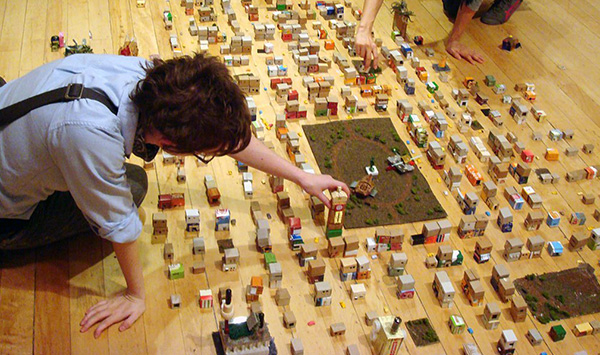The New York Trash Exchange (NYTE)
Max Liboiron
Participatory ExchangeSeptember 9 - October 16, 2010

The New York Trash Exchange (NYTE) is a cross between a cultural laboratory experiment, environmental activism, and a model of economic change. Like all of Max Liboiron’s recent work, this piece is a participant-determined, interactive economy based on trash. A miniature city has been made from New York City discards. Gallery visitors are welcome to take any piece of the city away with them at any time as long as they make and leave something behind in exchange. This single rule of interaction mimics a steady-state economy, where there is no net growth or decline, though there is still development.
All of Liboiron’s trash installations include a different one-rule economy. Gallery visitor’s interactions with the work usually create social economies that exhibit different characteristics than those of everyday market-driven capitalism. They tend to show that people are not inherently greedy, self-maximizing, or selfish, but generous, creative, and even daring in their relationships to goods and to each other. Visitor actions are tracked with video or surveys and the data is used to model and imagine sustainable economic and material futures.
New Yorkers are the ultimate test of self-interest and material accumulation, but New York is also a bastion of creativity— how will visitors to AC Institute choose to “develop” this miniature New York City? Will it be impoverished, with viewers taking the best pieces and leaving behind rubbish (as Canadian curators and critics have predicted)? Or will it flourish? The end result is in your hands.
About the Artist
Max Liboiron is an artist and academic whose understandings of environmental relationships were formed growing up in an area of rural northern Canada that is disproportionately affected by poor environmental health, deforestation, reservation poverty, and climate change. Now a PhD candidate at New York University in Media, Culture, and Communication, Liboiron continues to work with issues of environmental sustainability—specifically, garbage— in academia while exhibiting her art in Canada and the United States.
Image courtesy the artist.
